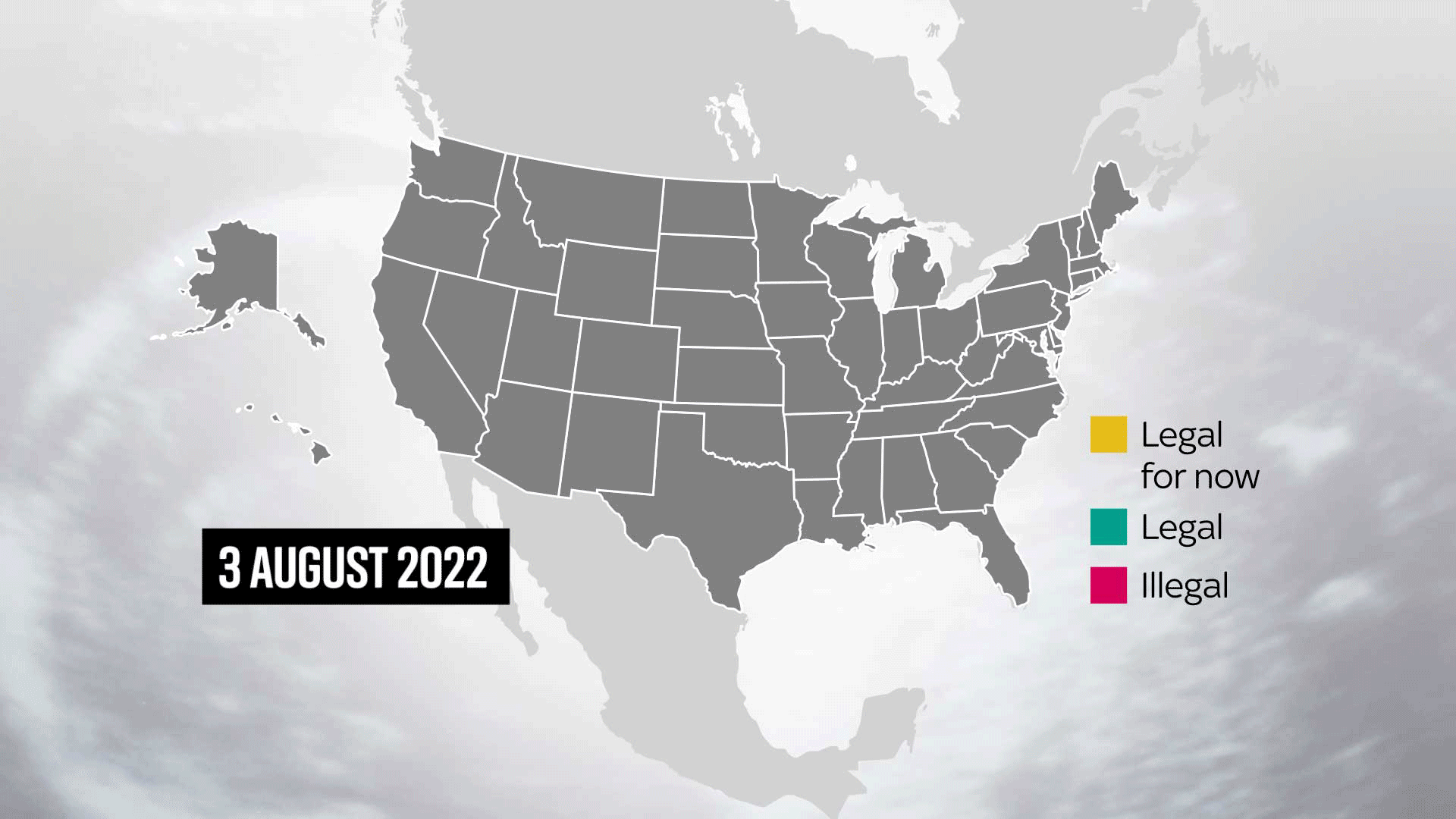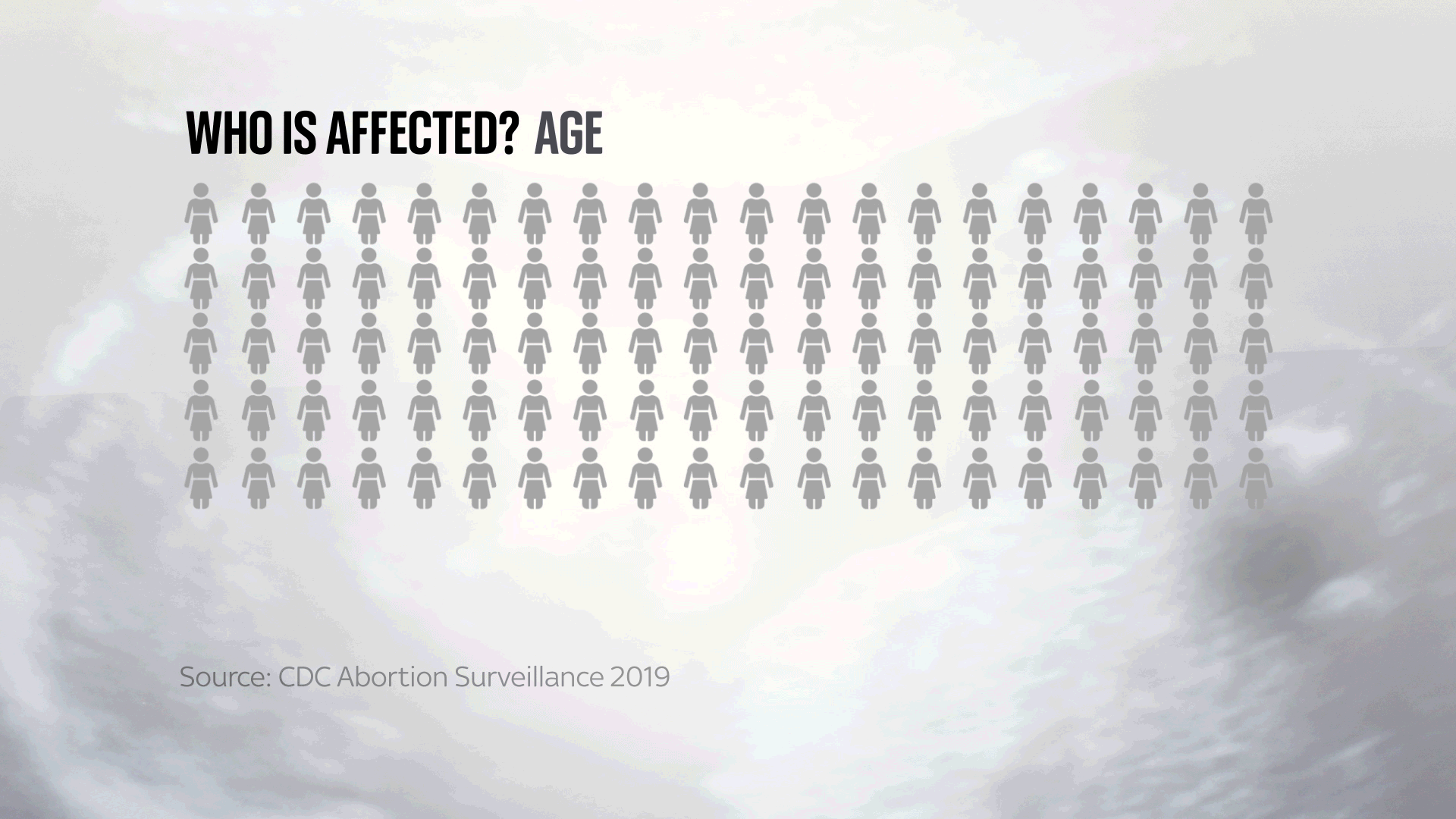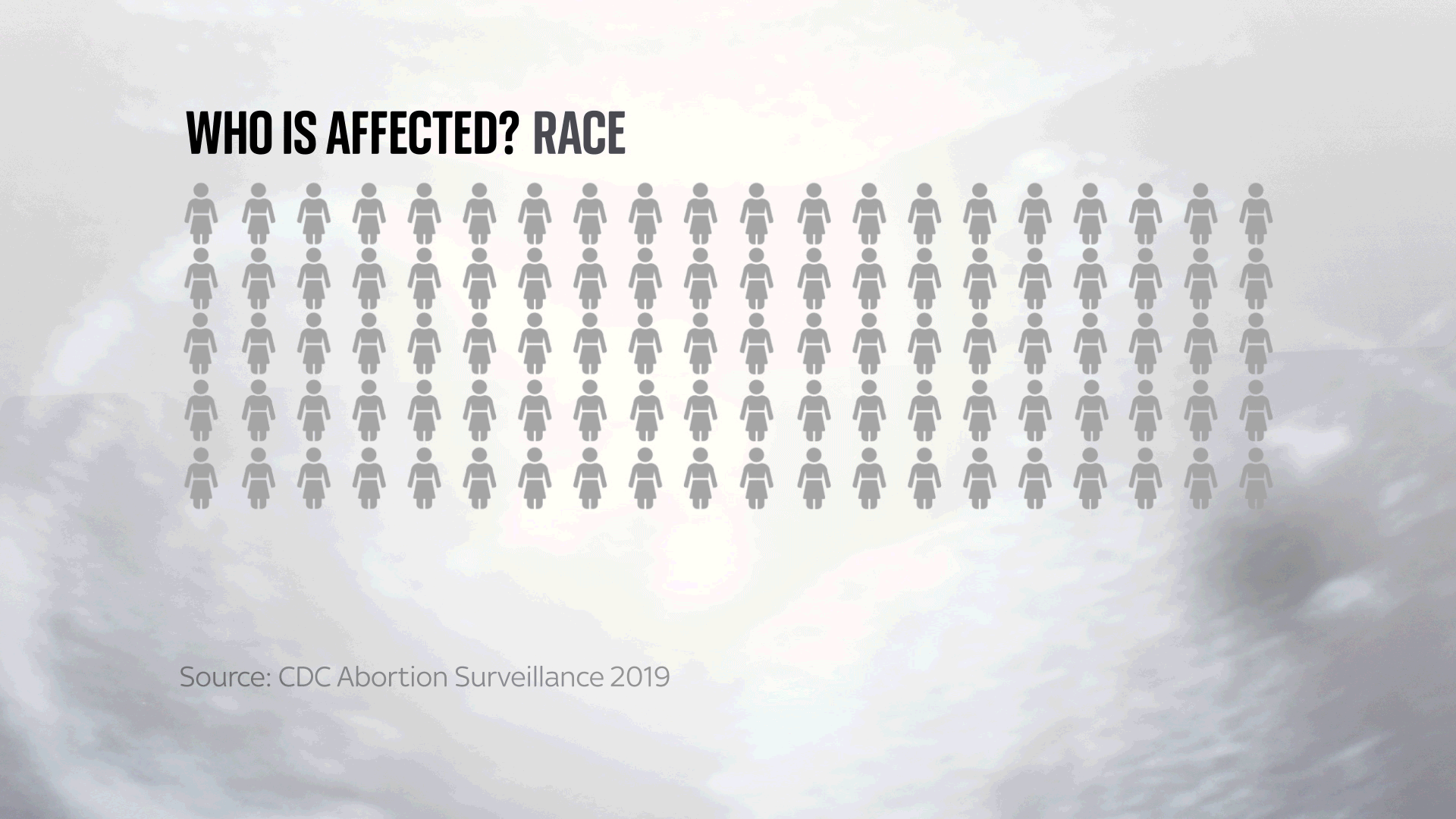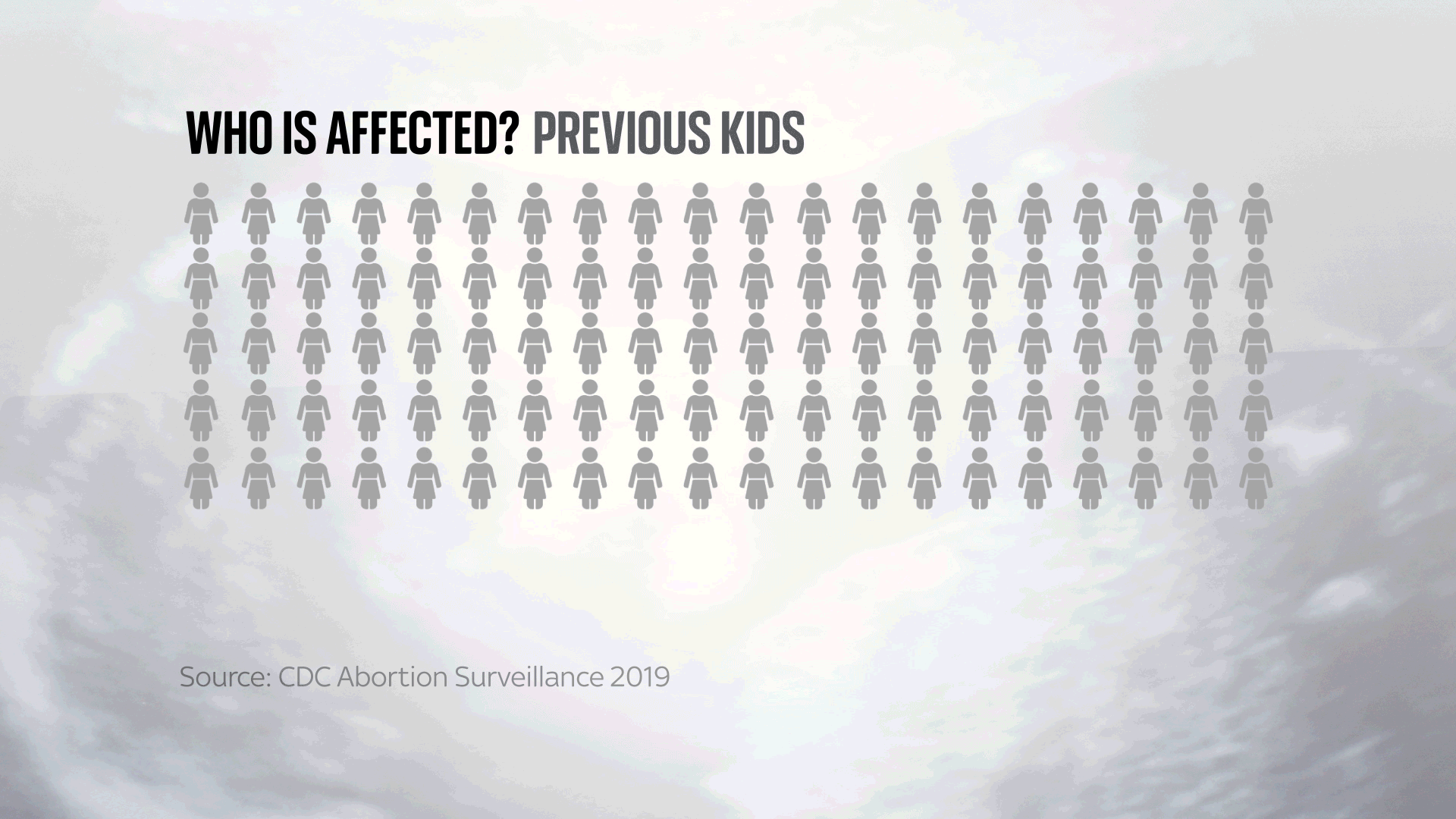The Supreme Court overturned Roe v Wade 40 days ago, terminating a constitutional right women had enjoyed for nearly four decades: the right to have an abortion.
Since then, the reproductive rights of an estimated 58 million women across America have been called into question.
These charts show what’s happened since that ruling reversal.
How abortion laws have changed

Hours after the Supreme Court judges handed down their judgement, Missouri became the first state to “effectively end abortion” – in its Attorney General’s words.
The Midwestern state was one of 13 to have previously passed “trigger laws” – bans ready to come into place in anticipation of the ruling being reversed.
In the days that followed, states like South Carolina and South Dakota also banned the procedure.
Judges in some states blocked these bans though. Louisiana’s trigger law was halted after just three days, and its status has changed three more times.
The state of abortion today

The picture is fractured. Lawmakers in some have moved to shore up reproductive rights while their legislative counterparts across state borders do the opposite.
Voters in Kansas rejected a proposed amendment on 2 August which would have let its Republican lawmakers ban or further restrict abortion.
The White House was quick to issue a statement: “This vote makes clear what we know: the majority of Americans agree that women should have access to abortion and should have the right to make their own health care decisions.”
The courts have become a battlefield. President Biden’s administration brought its first legal case on Tuesday, against Idaho’s planned total abortion ban.
In some more conservative states like Idaho which have a long history of trying to restrict reproductive rights, it seems like only a matter of time before abortion is restricted.
The rise of medical abortions
Medical abortions can be taken at home and telemedicine providers have said they’ve noticed a rise in interest in their services.
It involves taking two tablets prescribed by a healthcare provider, and crucially pregnant women can take them in the comfort of their own home.

Hey Jane experienced a 107% increase in web visitors in the 30-day period since Roe was overturned, and nearly a fifth more patients.
Chief executive KiKi Freedman said it’s evidence of how crucial telemedicine abortion is “especially when it comes to absorbing patients from overburdened clinics and offering a fast treatment option for people facing long in-person appointment wait times”.
At-home abortions have been on the rise in recent years, particularly during the pandemic, and now they’re expected to play an even bigger role.
They accounted for 54% of all abortions according to the Guttmacher Institute which released the data about US women in May this year.
Read more:
Roe v Wade: How did we get here?
Kansas votes to protect abortion rights in state constitution after Supreme Court ruling
Who is most affected?
Out of an estimated 58 million American women of reproductive age, this is who has an abortion.

If you’re a woman in your 20s, you’re part of the group most likely to have an abortion.
They make up nearly two-thirds of the total number, with women over 40 and girls under 19 accounting for 3.7% and 8.8% respectively.

In terms of ethnicity, non-Hispanic black women make up the largest group with a 38.4% share, and they are very closely followed by white women at 33.4%.

Figures show people who had an abortion were more likely to already have children, 60% of women did.
What could happen next?
More legal battles and more political repercussions.
Anti-abortion Republicans will be watching the result in Kansas as campaigning for November’s midterm elections heat up.
Meanwhile, pro-choice Democrats will hope they will get a boost from voters who think Republicans have shifted too far right.









